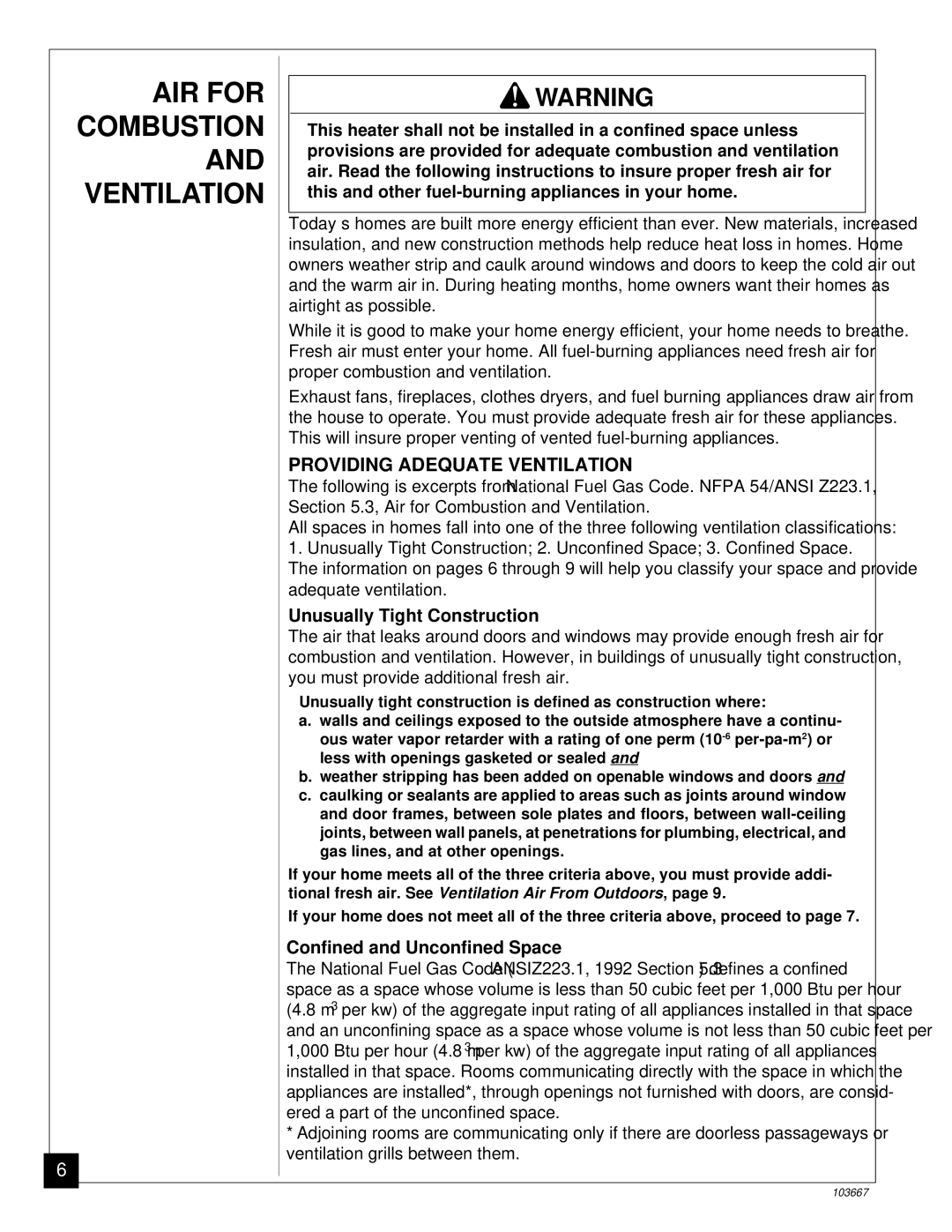CGCF26TP specifications
Desa CGCF26TP is a powerful and efficient gas fireplace that exemplifies the perfect blend of modern technology and traditional design. Designed to enhance both aesthetic appeal and functionality, this fireplace is a favored choice for homeowners seeking to create a cozy atmosphere in their living spaces.One of the key features of the CGCF26TP is its sleek and contemporary design. The fireplace boasts a large viewing area that maximizes the flame's visibility, allowing homeowners to enjoy a mesmerizing fire experience. The tempered glass front not only adds to the visual appeal but also ensures safety by preventing embers from escaping. The clean lines and minimalist structure allow it to easily integrate into various interior styles, from modern to rustic.
In terms of technology, the CGCF26TP is equipped with an efficient gas burner system that offers both natural gas and propane options. This dual-fuel capability provides flexibility for homeowners, allowing them to choose the fuel source that best suits their needs. The unit features an advanced electronic ignition system that guarantees quick and reliable start-up, eliminating the hassle of manual lighting.
Energy efficiency is a significant consideration in the design of the CGCF26TP. The gas fireplace is engineered to deliver high heat output while minimizing fuel consumption. With an impressive efficiency rating, it effectively heats the room without excessive energy use, making it an environmentally friendly choice. Additionally, the fireplace can be controlled using a remote, giving users the convenience of adjusting heat and flame settings from anywhere in the room.
Another notable characteristic of the CGCF26TP is its ease of installation. It is designed for both direct vent and vent-free applications, providing versatility in positioning within the home. This flexibility makes it suitable for a wide range of settings, whether it is in a living room, bedroom, or even an outdoor patio.
The CGCF26TP also emphasizes safety, featuring a built-in safety shut-off system that automatically activates in the event of irregular operating conditions. This ensures peace of mind for users, allowing them to enjoy the warmth and ambiance of their fireplace with confidence.
In summary, the Desa CGCF26TP gas fireplace stands out for its modern design, energy efficiency, dual-fuel capability, and advanced technology. It offers homeowners a reliable and aesthetically pleasing source of warmth, making it a valuable addition to any home. Whether for heating or ambiance, the CGCF26TP is a prime choice for those seeking a quality gas fireplace.

